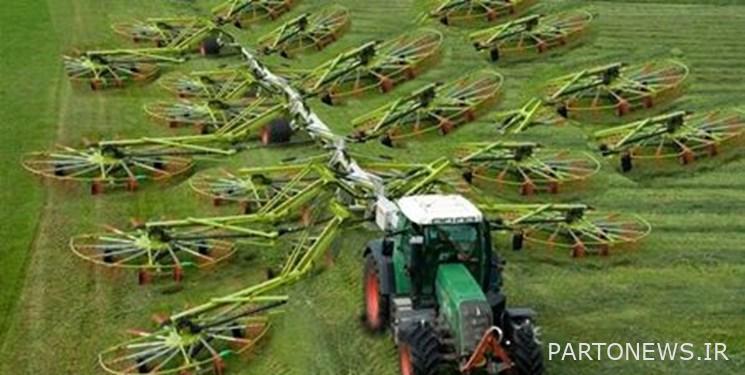Why the previous governments could not implement the model cultivation plan

According to the Fars news agency, citing the public relations of the Tehran 20 program, last night, November 3, the case of reforming the cultivation pattern in the country, which was specially emphasized in the 13th government, was examined.
* What is the cultivation pattern?
Reforming the pattern of agricultural cultivation is a method that has been implemented since the first day of the Ministry of Agricultural Jihad of the 13th government in order to solve the country’s problems. Cultivation pattern in simple language means to know where what we plant, when we harvest and what we use it for. But in contrast to this plan, there are problems such as the high price of products, market fluctuations and lack of products, etc.
Last night, Tehran 20 hosted Alireza Mohajer, deputy of agriculture affairs of the Ministry of Agricultural Jihad, and Alireza Abbasi, a member of the Islamic Council’s Agriculture Commission, to explain how to implement this plan in the country. Also, in a phone call with Hashem Soudager, a member of the agricultural core of Imam Sadiq University’s growth center, academicians’ questions about the problems that may exist in the implementation of the project were raised.
At the beginning, Alireza Mohajer said about the most important issues related to cultivation reform in the country: In general, the cultivation model has been the wish of all officials from the past until now. If a product was produced too much or too little, the discussion of the cultivation pattern would arise. The Parliament approved this plan this year, and the Agricultural Research Organization, the Vice-President of Planning, and the Vice-President of Agriculture, Jihad Agriculture, implemented this plan for 70% of crops, so that if problems arise in the coming years, we can correct it.
Alireza Abbasi said about this project: Optimizing water consumption is one of the results of the cultivation model. Can this resolution help to improve water consumption in agriculture? Cultivation pattern means placement of agricultural production based on the capacities of each region. Each region has advantages and limitations. We have to define what crops and when to grow in each region. This has been an issue that has been emphasized in the last few years, but unfortunately it has not been done.
The member of the Agriculture Commission of the Islamic Council continued: The officials were always afraid of doing it, but in this government, this plan was announced and approved. But the pattern of policy cultivation is not communicated and has requirements. I do not agree that our country has the problem of limited soil and water resources and whether these issues can be solved by announcing the reform of the cultivation pattern. We must separate basic and non-essential planning and needs. We should produce basic products in the country by considering the priority and implement non-basic products in different regions as per the need.
He added: In our cultivation model, we only consider the placement of the product. But this placement alone is not enough. We must have encouraging and punitive policies in this area and apply agricultural knowledge. Let’s use this capacity and continue the productivity of the product. It cannot be cultivated just by implementing the pattern.
In a phone call to Tehran 20, Hashem Soudager said: The discussion of the cultivation pattern is commendable. Several agriculture ministers had promised to reform the cultivation pattern on the day of their vote of confidence, but they failed. This case is effective in the field of optimal water consumption and self-sufficiency of the food industry. Why the previous ministers could not do this? And what has changed now that we have been able to implement this?
How can the increase in agricultural production be done by improving cultivation?
Regarding the fact that the modification of the cultivation pattern will lead to the correct placement of crops, Mohajer said: The cultivation pattern is prepared and designed based on the needs, climate and economy. If one of these has a problem, there will be a problem in the process of implementing the plan. Therefore, the first issue is that the cultivation model alone is not the responsibility of the Ministry of Jihad. The Ministry of Energy should prepare the water, the Ministry of Economy should prepare this project, the Budget Organization should prepare the budget, the Environment Organization should inform us that this work is compatible with the environment and… In the past years, because the coordination of these institutions was difficult, the plan was not implemented; But with the follow-up of the Parliament and the Ministry of Agricultural Jihad, this issue will be implemented.
About how much wheat we want in the country and where to plant it, the Deputy Minister of Agriculture Affairs of the Ministry of Agricultural Jihad said: We can produce wheat in all the provinces of the country. We give them a program based on the climate and soil of each region. For example, we need 13 million tons of wheat in the country. For these 13 million tons, we have 2 million hectares of wet wheat and 4 million hectares of dry wheat. Each province prepares this according to the size of the party.
He added: Our goal in the production of summer vegetable products like cucumber is to take its cultivation from the open space to the greenhouse in order to increase the water efficiency and at the same time we can increase the capacity of the production package vertically. These lands, which are freed from vegetable and summer cultivation, can be used to cultivate basic crops. For example, in Khuzestan province, we have to plant 350 thousand hectares of wheat, 100 thousand hectares of rapeseed and 50 thousand hectares of summer vegetable crops.
On the other hand, Abbasi said with some suggestions: According to the Minister of Jihad Agriculture, following this plan, we will increase the production of agricultural products by 11%. For example, if we have 57 million tons of agricultural production, we want to increase it to 67 tons. What happens when this happens? Because we aim to produce both basic goods and include non-basic goods that are valuable for us in the plan. So the question that arises is, how does this increase in the volume of production happen?
A member of the Agriculture Commission of the Islamic Parliament pointed out: According to statistics, 423,000 people work in the lands in the country that are less than one hectare. In fact, out of 15.7 million hectares of agricultural land in the country, 423 thousand people are engaged in agricultural activities in less than 200 hectares. 780 thousand people 1.2 million, 680 thousand people 1.6 million, 142 thousand people 3.9 million and 35 thousand people 3.3 million. What are our plans for large lands?
Soudagar also said: Why did the previous ministries of agricultural jihad not announce the plan even though we were obliged to have a cultivation pattern for 10 years? The combination of these reasons makes it difficult, costly and risky for the government to implement the cultivation model. Of course, the 13th government has shown that it accepts the riskiness of entering into works that may have costs for the government but are in the interest of the country as a whole.
The member of the agricultural core of the growth center of Imam Sadegh University continued: But if there are no prerequisites, this may work against itself and cause possible costs. Designing the cultivation pattern of an aristocracy requires information regarding climatic conditions, weather, rainfall, water resources, the country’s needs and income generation for the farmer. The Minister of Jihad of Agriculture announced last year that there are 130 data systems in the Ministry of Jihad of Agriculture that are not consolidated and we do not have a defensible number and figure in agriculture. I want to know where the work of the agricultural observatory ended. Is this cultivation model based on defensible data or not?
He added: We assume that the data is integrated, is it enough to have a good cultivation model? Are there any system models in the Ministry of Agricultural Jihad that can use data at the policy-making level in a way that integrates all conditions and can measure its effect on basic commodities through scenario planning in the future?
Sodagar pointed out: Why should the farmer do the cultivation pattern? A farmer farms to support his family. The same potato-onion debate happens every year, and many experts believe that this will happen again despite the plan to modify the cultivation pattern, because the farmer’s problem is not that someone tells him what to plant, but his problem is which crop earns him more money.
Mohajer also said in response: One of our problems in this project is small ownership. I request all the officials of the country to think about dividing the lands of the country. If this trend continues in the coming years, we will face a catastrophic problem that our production will not meet the needs of the country. Because currently 70% of our lands are below 5 hectares and in the next 10 years with this division of inheritance it will reach 90% below 3 hectares and no planning will work anymore. A person who has a hectare of land goes to plant a crop that will support his livelihood. So when we tell him to plant wheat, he says that wheat earns 50 million, but tomatoes earn 200 million. We should proceed based on needs, climate and economy so as not to get into trouble.
The deputy of agriculture affairs of the Ministry of Agricultural Jihad said about the large agricultural owners of the country: 90% of the sample farmers who produce more than normal are large owner farmers. Because they have the capital and machinery to implement the cultivation model plan. One-hectare farmers do not have these facilities. For this purpose, the Ministry of Agricultural Jihad is looking for the implementation of exploitation systems, which have been gathered in the form of cooperatives so that we can integrate these lands and move the project forward. For smallholder farmers, we intend to encourage them to implement the cultivation model by educating, promoting and justifying it.
On the other hand, Abbasi said: Based on the statistics we said, we cannot oblige all the target community to implement the reform of the cultivation pattern in the first year, but we can invest on the big owners. If there is going to be support, it should be in this section. 29 thousand people are working in watermelon cultivation in the country. We have 61,000 hectares under watermelon cultivation in the country, of which 51,000 hectares are cultivated by 12,000 people and the other 8,000 hectares are owned by 17,000 people.
In the end, the member of the Agriculture Commission of the Islamic Council stressed: If we want to do something in these reforms, we must invest in those 12 thousand people who own 51 thousand hectares. It should be the big goal of the owners in the first years.
end of message/

